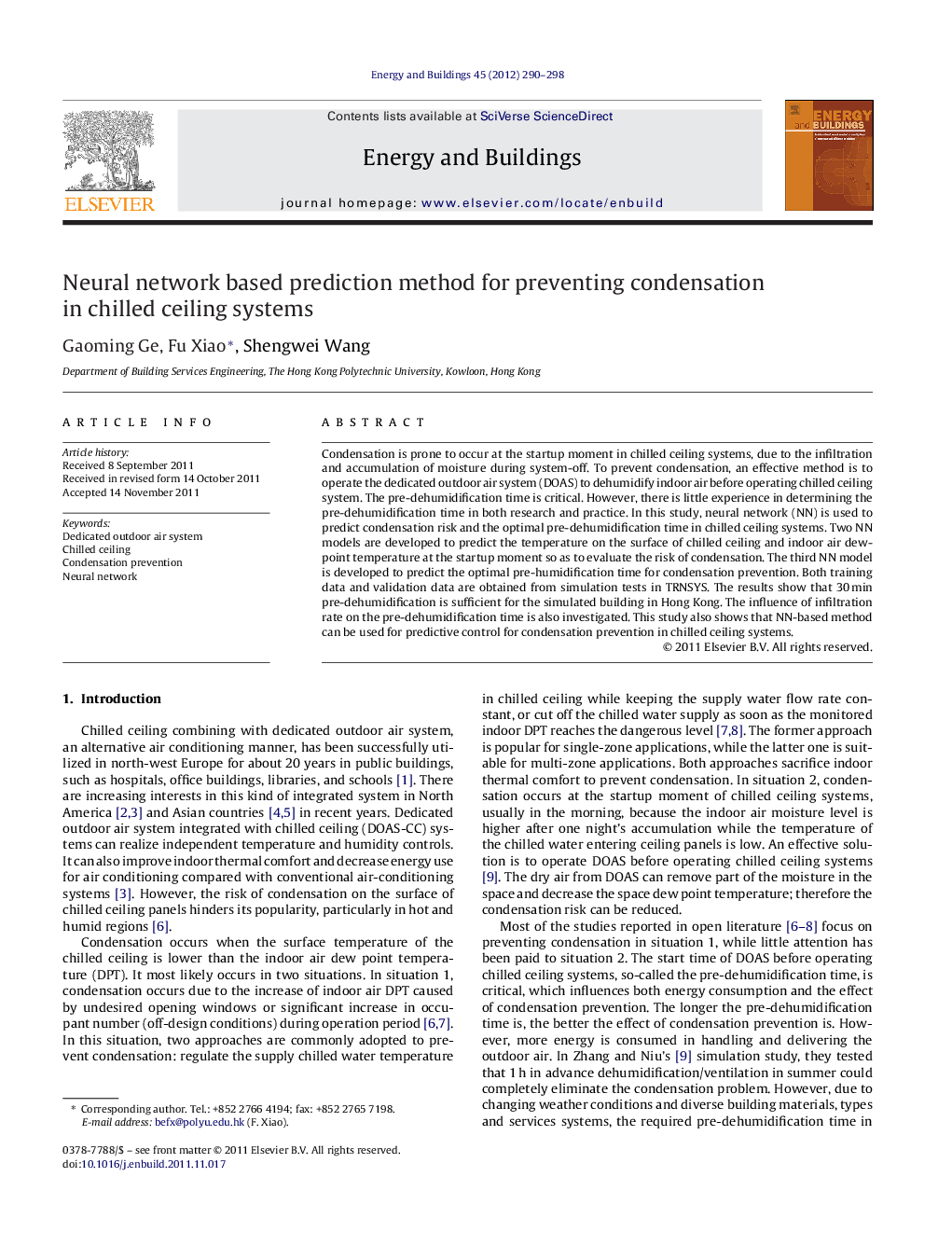| Article ID | Journal | Published Year | Pages | File Type |
|---|---|---|---|---|
| 264011 | Energy and Buildings | 2012 | 9 Pages |
Condensation is prone to occur at the startup moment in chilled ceiling systems, due to the infiltration and accumulation of moisture during system-off. To prevent condensation, an effective method is to operate the dedicated outdoor air system (DOAS) to dehumidify indoor air before operating chilled ceiling system. The pre-dehumidification time is critical. However, there is little experience in determining the pre-dehumidification time in both research and practice. In this study, neural network (NN) is used to predict condensation risk and the optimal pre-dehumidification time in chilled ceiling systems. Two NN models are developed to predict the temperature on the surface of chilled ceiling and indoor air dew-point temperature at the startup moment so as to evaluate the risk of condensation. The third NN model is developed to predict the optimal pre-humidification time for condensation prevention. Both training data and validation data are obtained from simulation tests in TRNSYS. The results show that 30 min pre-dehumidification is sufficient for the simulated building in Hong Kong. The influence of infiltration rate on the pre-dehumidification time is also investigated. This study also shows that NN-based method can be used for predictive control for condensation prevention in chilled ceiling systems.
► Condensation is prone to occur at the startup moment of chilled ceiling systems. ► Pre-dehumidification time is critical for condensation prevention and energy usage. ► Two neural network (NN) models are developed to evaluate the condensation risk. ► The third NN model is developed to predict the optimal pre-dehumidification time. ► NN method is reliable for predictive condensation control in chilled ceiling systems.
